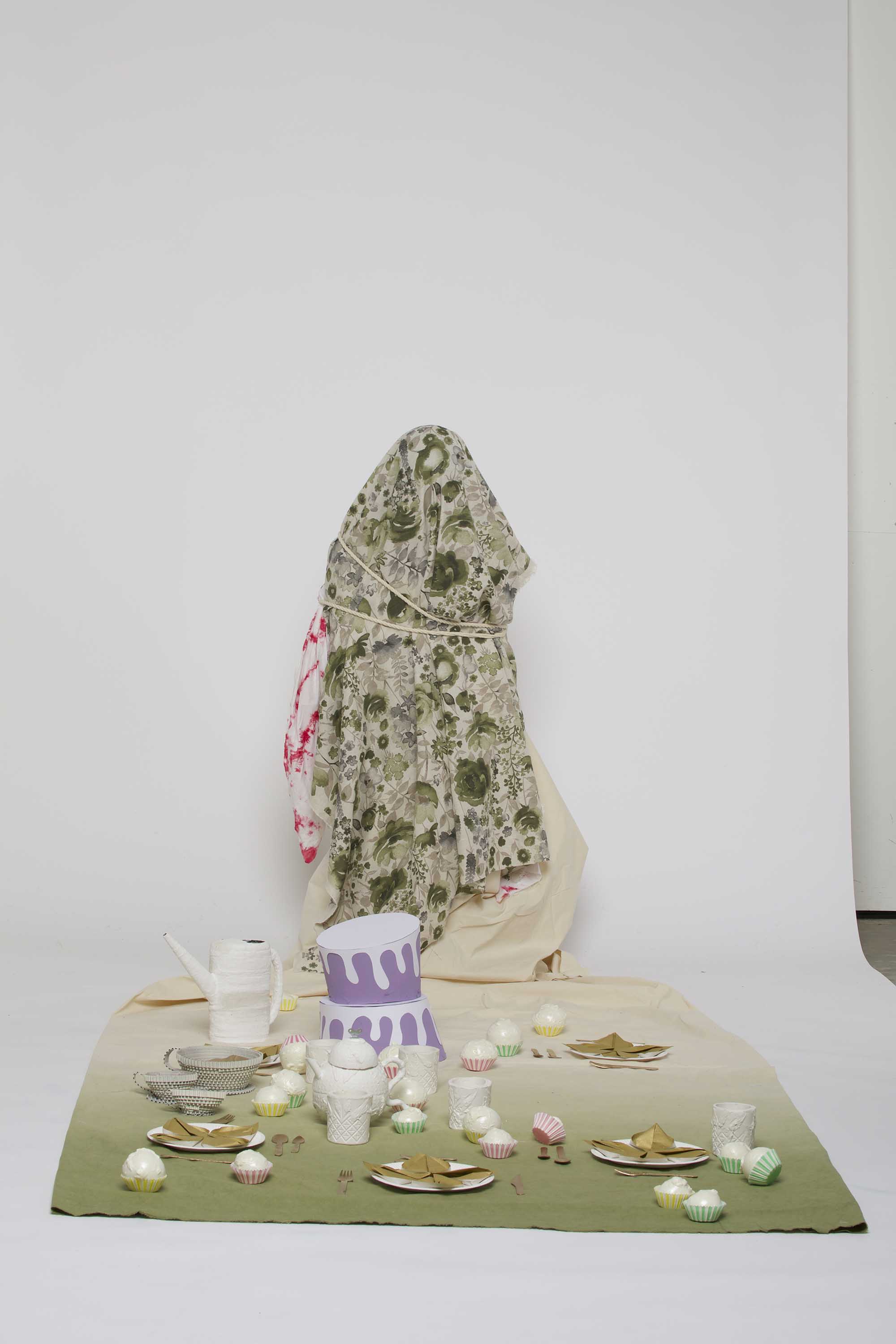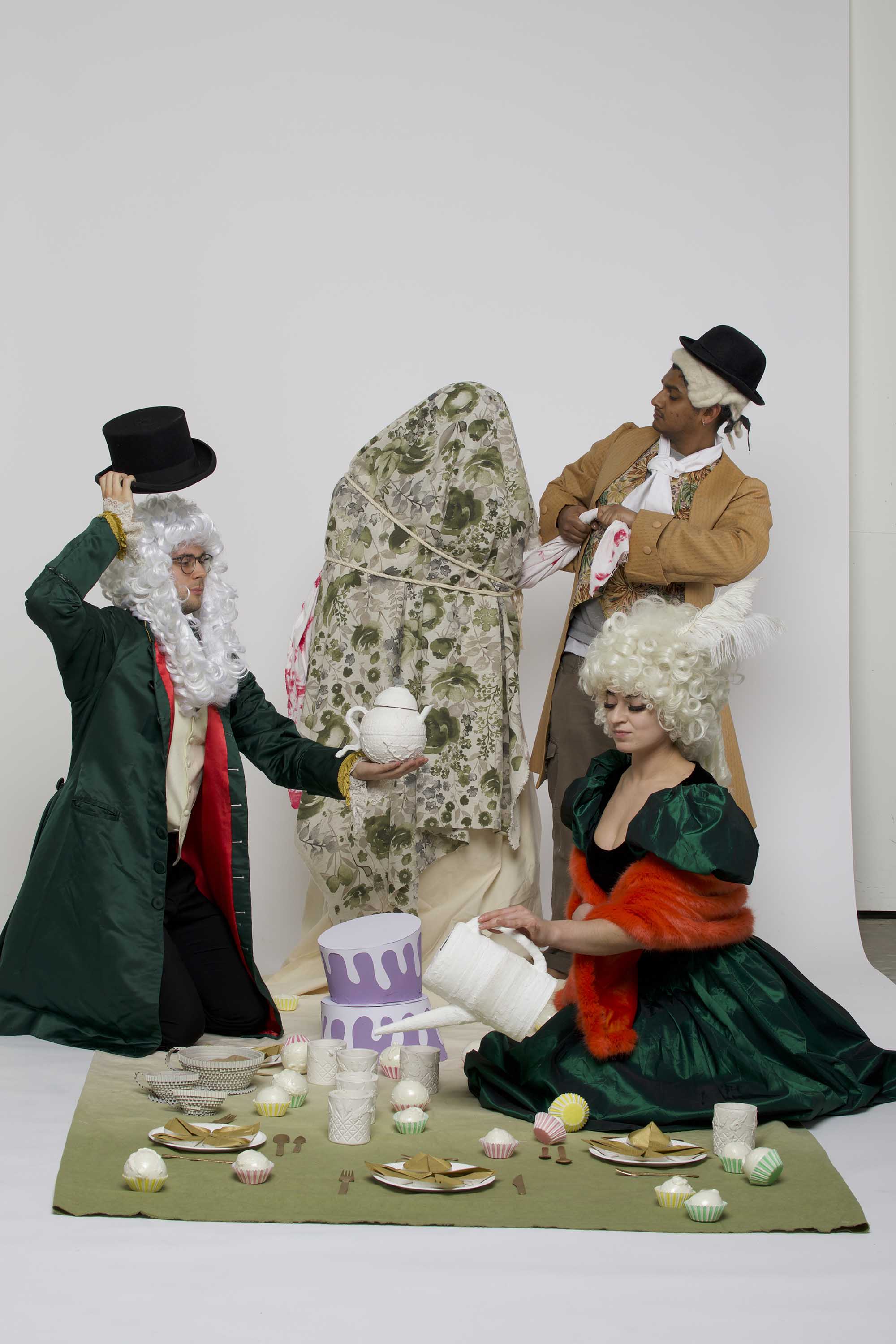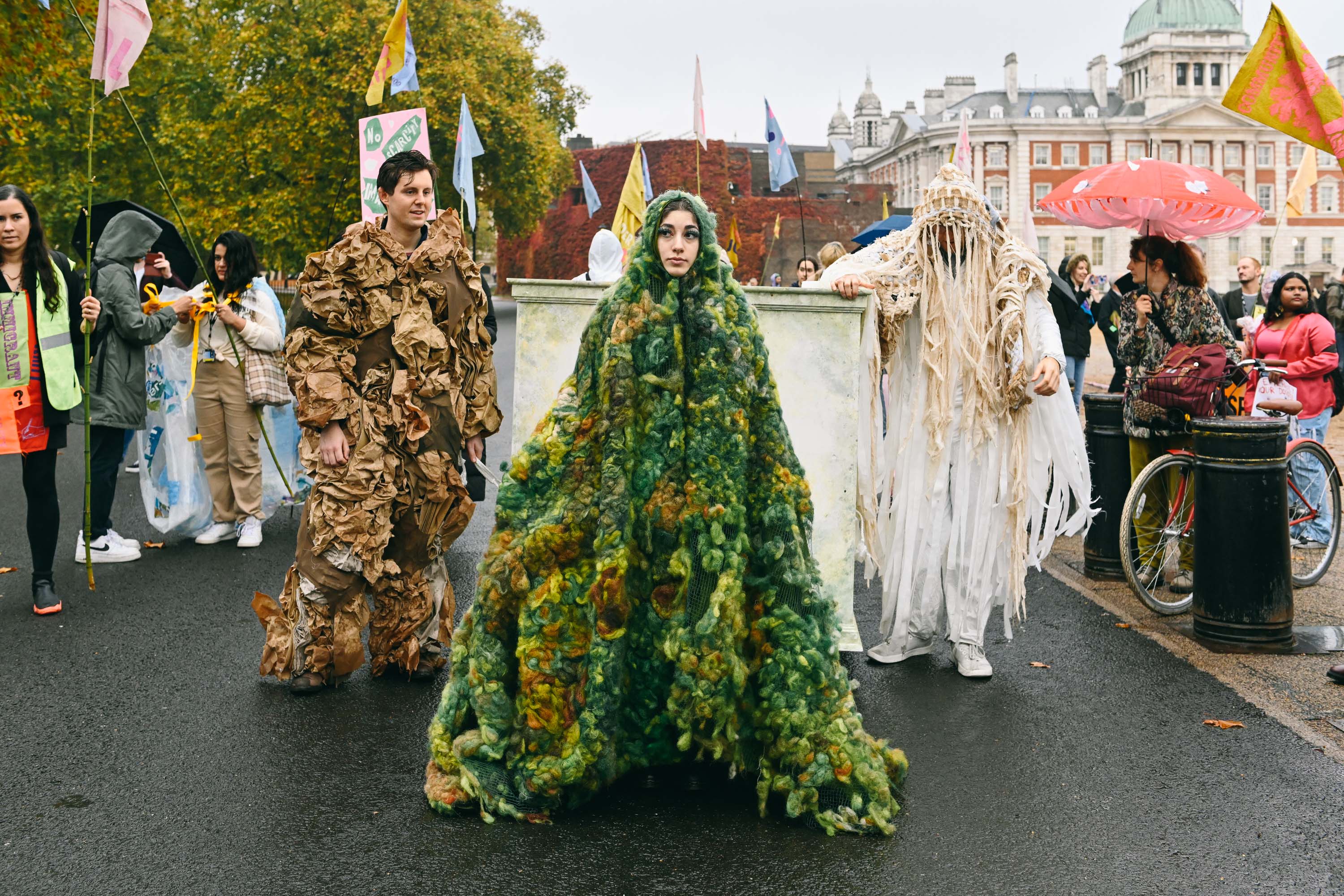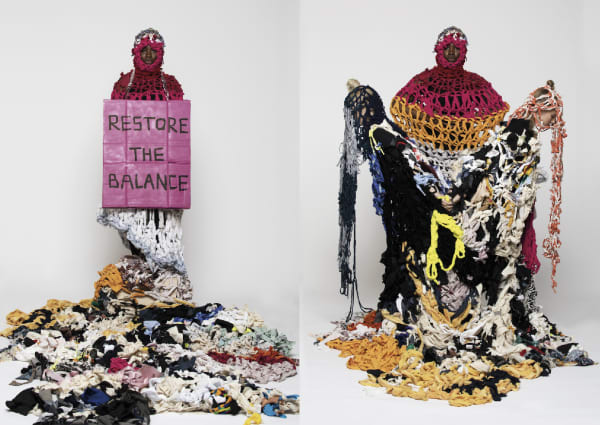As part of the Carnival of Crisis, M ARCH: Architecture students created performances and demonstrations for the Parade for Climate Justice. See this work on show in our Window Galleries until 11 January.
Presented by the UAL Climate Emergency Network, Carnival of Crisis was a rich season of creative environmentalism that spanned our Autumn term. The Carnival closed with the Parade for Climate Justice on 10 November, coinciding with the COP26 summit in Glasgow. Walking from Central Saint Martins to Chelseas College of Arts, the parade disrupt business as usual and demonstrate the power of the arts to captivate the public imagination, change behaviours and shift paradigms.
The first-year students of M ARCH: Architecture joined forces to create site-specific interventions for the parade. These could be choreographed performances, campaigns, demonstrations and/or protests that focused on our disappearing forests and their myriad organisms. Here we share a few of these highly imaginative costumes and props, made primarily from discarded materials.

Obsession
Elliot Wedge, Amadeo Martini and Irmak Kuzu
Memorials are used to remember historic people, places and events. However, when something is memorialised it gives us license to forget it from everyday life. London constantly forgets its forests. We, the voices of the forest, want to celebrate its wonders with the citizens of London. This living statue, in the heart of the city, tells nature’s stories through a shared language – movement.
We will translate our knowledge of the forest to Londoners and encourage them to remember us, value us, and protect us in their everyday lives. The culture of the forest is vibrant and collective, as is the culture of the city. Let’s celebrate our shared values!”

Off-Balance
Hannah Millett, Joy Matashi and Penny Brearley
Off Balance is a physical expression of how human action has deeply disturbed the equilibrium of the planet that we are completely reliant on for our collective survival.
It also addresses the dependencies that exist across non-human interspecies relationships, for instance the intimate symbiosis of the Yucca plant and the Yucca moth, which are unable to survive without one another. The piece, which is both a celebration and a eulogy, is woven into the fabric of the Anthropocene and its consequential tipping points, dis/ connectedness, dependency, and violation of the natural world. A tribute to the forest, nature, and loss of balance.
-

Samuel Fraquelli, Humzah Uzzaman, Leo Hui and Emilia Kepista, M ARCH: Architecture (photo: Kleanthis Kyriakou)
-

Samuel Fraquelli, Humzah Uzzaman, Leo Hui and Emilia Kepista, M ARCH: Architecture (photo: Kleanthis Kyriakou)
Ceremony of Overconsumption
Samuel Fraquelli, Humzah Uzzaman, Leo Hui and Emilia Kepista
What was once a hugely important trade to the East India Trading Company and a commodity reserved exclusively for the upper-classes, tea-drinking is now enshrined not only in British culture, but many cultures across the world. However, there is a hidden cost to the mass-production of tea. Not only are human rights violations still present in many tea plantations, there are also huge environmental implications. Over-consumption has resulted in the deforestation of vast areas of forest land rich in biodiversity. So called “land-grabbing” by foreign investors is having a knock-on effect to the wider environment as large portions of land are converted into tea plantations.
For the Carnival of Crisis, we are proposing a large-scale tea party in which we showcase and personify these extractive processes. By looking at the “ritual” through the lens of various organisms, we want to discover how they feel during each stage of the process. How do the organisms feel as they are farmed? During the brewing process? And what then happens to the waste at the end of the “ritual”? How can we challenge our current relationship to the forest if we are not willing to change even the most basic, ground-in aspects of our daily lives, like having a cup of tea. Would you knowingly drink the tea if you could see what went into each cup?

Neighbourhood
Leyla Salih, Dominica Piatek, Dilushanan Selvarajah and Rowan St John
Lend me some sugar, I am your neighbour!
Our contribution to the Carnival of Crisis engages with the semiotics of the forest, finding a means of representation that operates on both human and non-human terms. Here, we have used the notion of the neighbourhood to explore a more cooperative relationship within an ecology of selves. A network of relationships: some mutually beneficial, others passive and commensal.
We stand in solidarity with our complex beings (moss, lichen and fungi), taking the position of translators and amplifiers, giving them a voice on an unpredictable journey from Central Saint Martins to Parliament Square. We may get lost, we may intersect, we may even find new neighbours along the way. We will certainly find each other, reconnect and find strength in our own microcosmic neighbourhood.
Do we ever consider what nature might think of us?

GROWTH
Adam Stanford, Chris-Wall Hayes, Hannah Robinson, Eleanor Johnson and Harry Kendall
“The best thing about the Earth is if you poke holes in it, oil and gas comes out”
Republican U.S Congressman Steve Sickman, 2013, Twitter
The Anthropocene, emanating from the Global North, portrays humans as acting homogeneously against “Nature”, producing a communal liability. However, only a relatively small percentage of the global population is responsible for and benefited from the conditions that produced it. The Capitalocene, however, attributes the problem to the prevailing economic system rather than individuals or countries. Eco-Capitalism is designed to fit within the economic structure of capitalism; looking towards growth models to combat climate change.
GROWTH, brings this dichotomy to the foreground of public perception, subverting the Capitalocene by bringing the actions of capitalism to the immediate consciousness of the public. The capitalists move in a methodical and pre-planned route, using the forest as a commodity for growth. Attacking and extracting to fuel their own economic structure, the forest resists, morphing and adapting to the attacks.
Carnival of Crisis x M ARCH: Architecture is on show in our Window Galleries until 11 January.
-

Sachi Patil, MA Graphic Communication Design
-

Lili Gyarmati, 2021, Pre-degree Photography, London College of Communication, UAL


